Modifying my DSLR camera was the smartest thing I could have done for my astrophotography. Here's why.
A DSLR is a perfectly fine camera for getting into astrophotography. Past blogs have detailed how best to use a DSLR for nightscapes and lunar photography, and I’ve used DSLR data as examples for explanations of how cameras work and stretching, even dedicating an installment to figuring out the best ISO to use for your own camera.
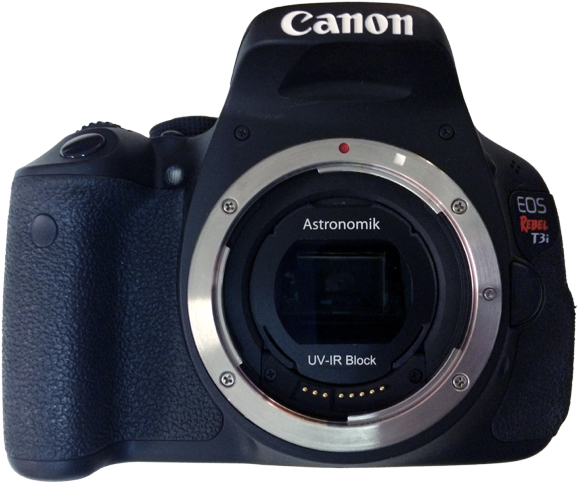
Richard S. Wright Jr.
Pros & Cons
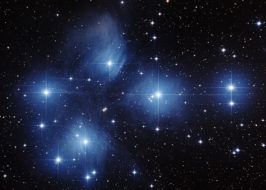
Richard S. Wright Jr.
Like many endeavors, choosing equipment involves trade-offs. But before we talk about those, I will say first that a DSLR is the single most versatile camera you can own. Not only can you use it for deep-sky work, but also lunar and planetary photography, nightscapes, as well as daytime photography. A DSLR is not my very favorite camera for deep-sky work, but if for some reason I could only keep a single camera, it would be one of my DSLRs. An off-the-shelf DSLR works splendidly for most astro-imaging. They also work very well on star clusters (both open and globular), reflection nebulae, and most galaxies.
The main compromise involved in using a DSLR instead of a dedicated astronomical camera is temperature regulation. Cooling a camera makes a tremendous reduction in dark current noise, and many imagers will go to some lengths to cool their DSLR’s, or they'll purchase a DSLR that has a cooling unit installed as an after-market add-on. However, this may not be desirable to those who want to also use the camera for daytime photography, as it becomes too awkward. I’d just as soon use a dedicated, cooled astro-camera.
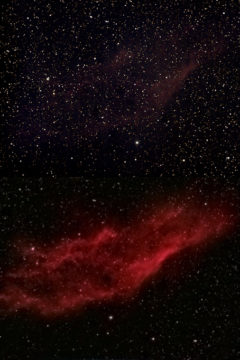
Richard S. Wright Jr.
The other advantage of a dedicated astro-camera is its sensitivity to red light at the wavelength known as hydrogen-alpha. Light at this wavelength dominates emission nebula, and in some nearby galaxies it shows where knots of star-forming activity is occurring.
The imaging sensor in the DSLR is actually just as sensitive as most other astro-cameras to the hydrogen-alpha wavelength; however, for daytime use, DSLRs are manufactured with a filter that blocks deep red through infrared (IR) light in a way that a typical astro-camera with an IR/UV cut-off filter does not. Fortunately, there is a way to make your DSLR more sensitive to this light and bring out these details in your deep sky images.
Modifying Your Camera
The process is quite simple. First, void the warranty on your camera by opening it up. Remove the parts and electronics until you get to the optical window above the sensor and remove it. Now replace it with clear glass or an IR-blocking filter that is less aggressive and lets the hydrogen-alpha wavelength through. Then simply reassemble the camera. It's easy! All you need is a screw driver and some instructional YouTube videos!
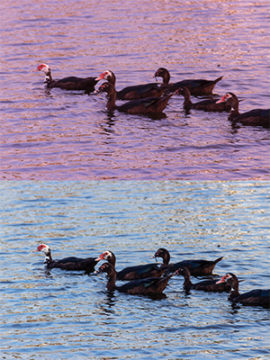
Richard S. Wright Jr.
Okay, so if the above paragraph doesn’t terrify you, have fun! For me, this is a non-starter. Fortunately, there are abundant sources where you can purchase a camera pre-modified, or services that will take your existing camera and modify it for you.
For example, Astro Hutech will sell you a new modified camera with a one-year warranty. I didn’t know about this when I bought a brand-new Canon 5D Mark II and sent it out for modification. Cold sweat was dripping from my brow as I packed it up, knowing my warranty was void on a brand new and expensive camera that I was not going to be able to afford to purchase twice. My current recommendation for the budget minded? Buy a used Rebel off eBay and get it modified. It's a great value and produces a big bang for the buck.
There are two types of modifications you may be interested in. The standard one provides a sensor cover plate that filters IR/UV but allows the hydrogen-alpha wavelength to pass through. All images will have a reddish cast to them, but this is easily balanced in post-processing. Not only do you capture more signal to work with for emission objects, but you can also still use the camera for daytime photography (typically with a custom white balance setting).
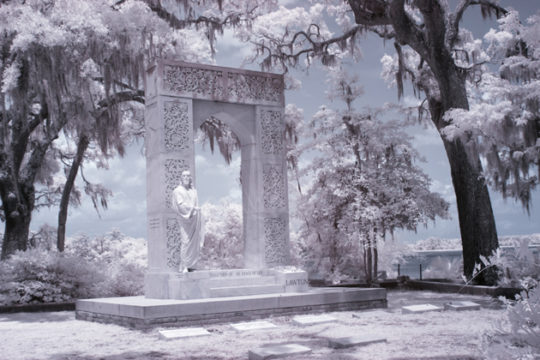
Richard S. Wright Jr.
Another option is Full Spectrum modification. I’ve been through three modified DSLR’s myself, and my last one was modified in this way. This option places a clear cover over the sensor in order to pass through all wavelengths. Now, your DSLR is sensitive to ultraviolet and infrared light. If your optics are all reflective, you can capture more signal this way. Most of us have some refractive elements (where light passes through glass), and many of these are not corrected very far outside the visible spectrum, meaning this ultraviolet and infrared light will be unfocused compared to visible wavelengths, so for general astrophotography, you will still need an IR/UV filter outside the camera, or you can use a convenient clip-in filter system (seen in the image at the top of the page).
My main reason for choosing full-spectrum modification is so that I can shoot infrared photography. I use an IR-pass filter on the Moon frequently, and daytime IR photography is also an interesting pursuit. At longer IR wavelengths, the Bayer filter matrix on your color sensor is essentially opaque and you can do monochrome IR imaging. At lower IR wavelengths you still get some color. Some color manipulation techniques of IR images can be quite beautiful.
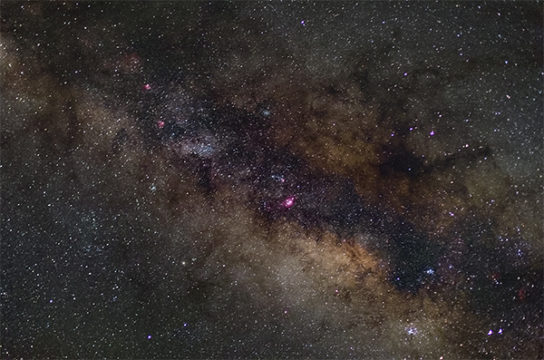
Richard S. Wright Jr.
But a modified DSLR isn't just for shooting the deep sky! Try it on your nightscapes too, especially with the Milky Way included. Emission nebulae which are barely perceptible in a stock camera will pop spectacularly with a modified DSLR.
My first DSLR was the original Canon EOS Digital Rebel. I was afraid to get it modified for more than two years, but when I finally took the plunge, I realized what I'd been missing. I've traded a few cameras since then, and I have some nice dedicated astro-cameras at my disposal. Still, I often reach for a DSLR, and my trusty full-spectrum EOS T3i still regularly collects photons.
 2
2









Comments
steve587
March 13, 2022 at 9:46 pm
Hi Richard,
Many thanks for this great article. I am just launching into the world of astrophotography and have been mulling whether to get my DSLR modified (but too scared!). I don't use the camera for daytime photography but the question I haven't been able to find an answer to in my searching has been the impact (if any) on doing planetary and moon imaging with a modified camera? Will it have any impact or will it change colour balance and I remove it in post processing. I'd be interested in your comments.
Cheers
Steve
You must be logged in to post a comment.
Geoff Watt
February 28, 2023 at 10:49 am
Hi Richard
I hope this message finds you well. I don't think this is exactly the correct place to get an answer to my question, but here goes. I have an older T3i which is not modified as well as a T6i which is modified. I have an Optolong L-Enhance filter which fits the T3i but not the T6i and an L-Pro which fits the T6i but not the T3i. (I hope this makes sense). My understanding is that the size of the sensor is the same and everything else is the same. Do you have any idea why this is - is it related to the modifying or is it something else? I would greatly appreciate your ideas. Tha nk you very much.
You must be logged in to post a comment.
You must be logged in to post a comment.